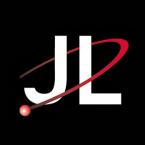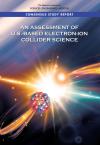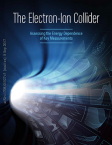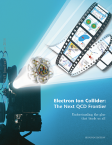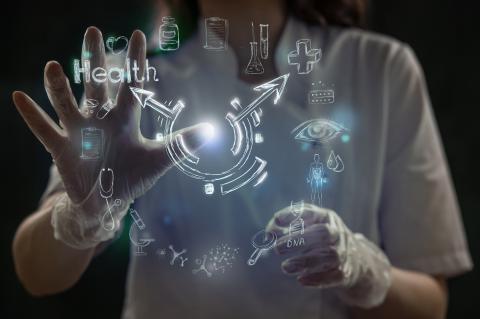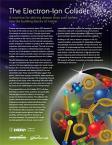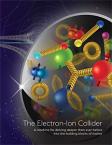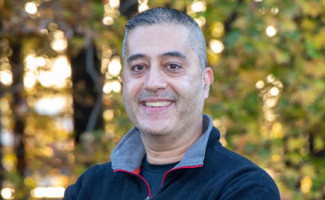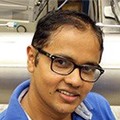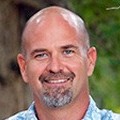Jefferson Lab’s diverse workforce is its strength, with a staff that includes technicians, computer scientists, engineers, physicists and support personnel, as well as nearly 1,700 scientific users who contribute to delivering the lab’s scientific mission. In this new series, Jefferson Lab is introducing our readers to the people and places who make possible its groundbreaking science.
In this series, Jefferson Lab introduces our readers to the places where groundbreaking scientific experiments are developed and studied—our scientists’ own workspaces.
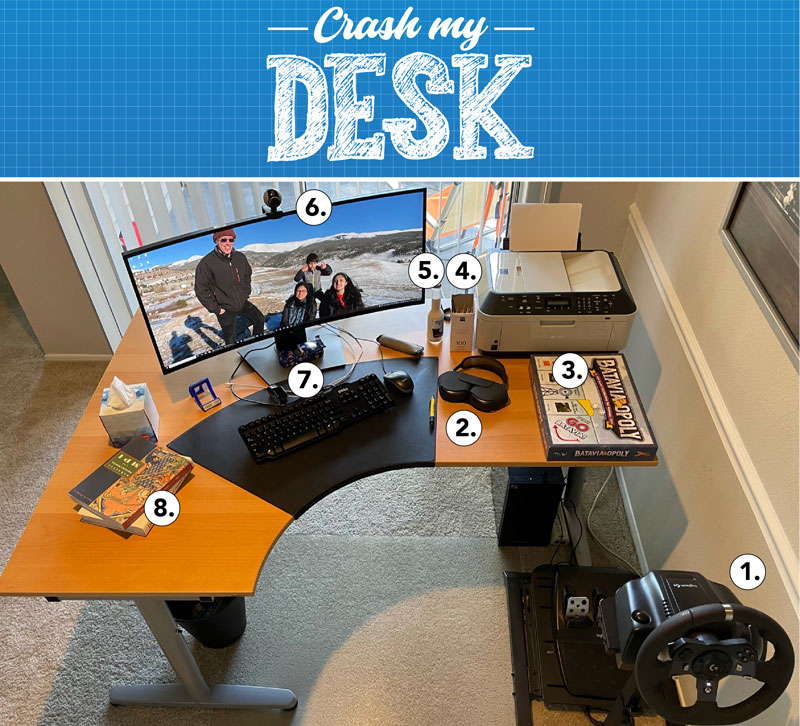
First-generation Immigrant Brings Home Office to Hampton
When asked to show off his workspace for this article, Computer Scientist Amitoj Singh had just moved with his family from Illinois, where he worked at Fermilab, to his home in Hampton—closer to his new job at Jefferson Lab.
“I just finished getting my home office set up last weekend,” Singh laughed when asked to showcase his desk. “But this desk is always this tidy. One of the traits of my personality is undiagnosed Obsessive Compulsive Disorder. Since my marriage and since I’ve had two kids, I’ve become very relaxed. A mess doesn’t give me anxiety anymore, but I do like to have a tidy desk. I’m more productive.”
Join us as we take a tour of Singh’s home office workspace and hear in his own words about the items he keeps close by:
1. The video game driving apparatus. During the pandemic, given that all of us were sheltering at home, for my own sanity I decided to upgrade my personal desktop computer, and I wanted to build it myself. First, I assembled it and then I thought, “Wouldn’t it be cool if I got 4K graphics on it?” So, I installed a gaming video card that was initially for 4k graphics and then my mind said, “Wouldn’t it be cool to try to play games on this gaming card?”
I played a few games. I like racing games and I involved my son, too, and we were both doing this together, so I went and bought a gaming wheel and that was a lot of fun. It came with pedals, and there was a brake, accelerator and clutch. We would play on a hardwood floor and it would slide, so then I bought a frame. What you see in the photo is the completed version of our anti-slide, gaming invention. There’s a frame and pedals, and on weekends, we play racing games.
It’s about four feet tall, and it’s adjustable for my height and my son’s height. My father was a mechanical engineer. Growing up, he was a role model to me and was always explaining how things work. I share a passion for cars with my son. During our one-on-one talks, he might ask how the engine works or brake works, and I’m able to tell him because I learned from my father.
I’m a mechanical engineer at heart. I like to seek out knowledge on how things work and so does my son. We like watching shows on how things are made—like how bridges built and how oil rigs work. All through my life, I’ve had this inquisitiveness to know how things work.
2. Apple Airpod Max Pro headphones. I bought these because right now I’m remote-working and I need something that’s reliable and of a good quality to hear my colleagues during meetings—even when my kids are playing nearby. I also love music, and having these is like having high-end speakers.
3. Bataviapoly. Before moving to Virginia to work at Jefferson Lab, we lived in a place called Batavia in Illinois. I found this Monopoly game that is based on the local city. It has Batavia street names, the fire department, and it even has Fermilab, my previous employer. As a family, we love to play Monopoly, and this reminds of all the places we’ve been.
4. Lens wipes for my glasses. That’s my eyeglass case next to the bottle.
5. Beer bottle filled with sand. Several years ago, my wife and I went to Cancun, Mexico. On the last day, the ocean was amazing—no offense to Buckroe Beach in Hampton. The water was crystal clear and as soon as you stepped into the water you could see all the way to the bottom. All I wanted to do was sit at the beach and do nothing and I thought, “If only I could take a piece of Cancun with me. Why not just put sand inside this bottle I’m drinking?” And I did. I keep it on my desk just to look at the bottle, and I dream up memories of myself hearing the waves splashing and seeing the clear blue water.
6. The desktop background photo on my computer was taken in Leadville, Colorado. It’s the tallest peak in Colorado. The person on the left, that is Don Holmgren. We worked together until 2014 when he retired. He said he was going to retire in Colorado. He and his wife found a house in Leadville up in the mountains, and my family and I went to go visit. It was great for me to meet with him and see him in person. He’s had a big positive impact on my life. He hired me at Fermilab in 2002 when I just came out of college at the University of Houston. He’s been my mentor, a good friend and an amazing boss.
He’s into astronomy, as well. In his backyard, he has one of those huge telescopes. At night, he showed us galaxies and planets, and my son was in awe.
7. Model car of a Le Mans Fifth Generation Corvette. I’m into race cars, and my favorites are Corvettes. I love American muscle cars. With Corvettes, they have generations for new designs. This model is of a fifth generation. We are now in the eighth generation of the Corvette. This model is a racing version of the fifth generation street Corvette.
There’s a famous racing competition called Le Mans. It’s a 24-hour race, and it’s very old. Most cars are Lamborghini, Aston Martin, Lexus…basically anyone who makes a sports car. The rules for the race are that you have to use the same engine from the street version of the car (the version you might sell to consumers), but you’re allowed to make modifications to the outside of the car.
Then you have to race that car for 24 hours. You can change drivers and have pit stops. Your car has to survive 24 hours going between 100 and 200 miles-per-hour.
So that model car is a Le Mans version of a fifth generation Corvette that has side exhaust pipes and is made of carbon fiber. I used to own a fifth generation Corvette. Now I drive a Honda Odyssey minivan because I have kids and a dog (*Laughs*).
8. Books. The top book is, “Parallel Programming with MPI” by Peter Pacheco. MPI stands for, “Message Passing Interface,” which is a programming language. The other book is “Computer Networks and Internets” by Douglas Comer. The reason I keep that book is because in your life, sometimes you have an incredible teacher where others may fade into memory. As a graduate at the University of Houston, I had a professor who was a student of Ken Kennedy. In the world of high-performance computing, people know about Kennedy. Everyone looked forward to my professor’s class. He gave out copies of this book to all of his students. Everything I learned in his class in 1999 still applies, and it’s a book I cherish and I do reference it.
Not seen, but felt daily in his work at the lab: I also want to say that I am a first-generation immigrant from North India who is living the example of the American dream.




